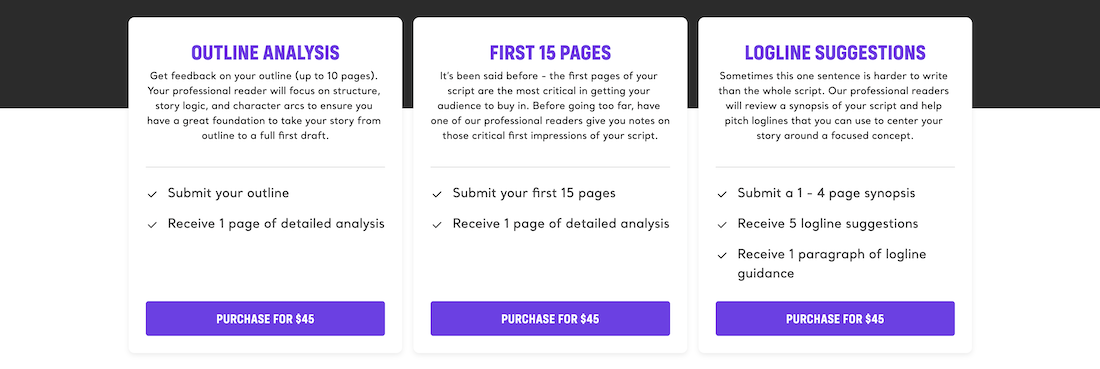Finding a way to break into the industry can feel daunting. However, there are a few tools that screenwriters can use to help them navigate the complicated and competitive waters of the industry, one of them being screenplay competitions.
I know, these contests are still extremely competitive, but Crosby Selander proves that contests are not all about placing or winning big. Selander is a working screenwriter who is developing his sci-fi romance BRING ME BACK with Legendary after the screenplay made the Top 10 Finalist in the Script Pipeline contest in 2020. But getting his feature into production wasn’t an easy process.
Luckily, Selander sat down with ScreenCraft’s Lee Jessup and shared how he made contests like the Script Pipeline work for him and launched his professional screenwriting career.
Find Accountability With Contest
One of the biggest challenges for many creatives is that dreaded thing known as procrastination. We all do it and often blame our nature for why we haven’t finished that feature we’re working on. But there is something we can do about it, according to Selander.
Selander knew that to get further in his career, he needed to sit down and work on his craft by writing as much as possible. The way he did this was by actively seeking out contests he could submit to and writing down a deadline for his writing projects. This gave him an accountability mechanism that made sure he could write as much as possible and develop his writing skills.
“It is always nice to circle a day on the calendar and be like, ‘I need to be done by then.’ That’s sort of a way of continuing your output even if you don’t have you know the accountability mechanisms of managers or agents or deadlines,” Selander said. “Having those contest deadlines I think is one way of doing it.”
But don’t just submit to contests that have a deadline that is appealing to you and your schedule. Selander highly recommends that screenwriters research notable contests that their screenplays that could perform well. This means examining the screenplays that placed in previous years and identifying who will read the script if it becomes a finalist.
Selander, who excels in sci-fi stories, knew that certain competitions wouldn’t be worth the time and money it takes to craft an excellent screenplay. In the end, establishing realistic expectations along with a deadline can help motivate writers to craft a great screenplay that has a chance of placing in a contest.
Make the Most of Your Placements
There can only be one grand prize winner in a screenwriting competition. Not everyone can be the grand winner, but they can make the most of their placement in any screenwriting contest.
When Selander learned his screenplay made it to the Top 10 in the Script Pipeline contest, he immediately got to work. “A huge wave of validation, but it also was like a rallying call to reach out to my network that I had gotten to know over the course of my time in LA … letting them know about my placement and letting them know about the script, trying to just get it out there,” Selander said. But reaching out to his network was only the start.
“At the same time, I also did a lot of cold emails [and] query letters. I was very targeted about it. I researched who the people were that I was going to be reaching out to, what clients they represent, and why I think they would specifically be interested in reading my script,” said Selander. “And I got a pretty decent response rate. I mean maybe about a 20% response rate asking to read which is pretty high.”
Rather than waiting to see if would win the grand prize, Selander made the most of placing in the Top 10 once he found out. What if he didn’t win and had waited to reach out? What would that response rate look like if they knew the script could only go so far in a contest? Selander didn’t wait to find out and took the initiative to showcase that his script was worth the time to read while it had heat behind it.
Read More: Trying to Build Your Network? The ScreenCraft Writers Summit Has You Covered
Another Tool in the Tool Belt
In the screenwriter’s tool belt, contests are a great way to get access to people outside of a writer’s network. While Selander used contests as a way to help him have accountability over how much he was writing, he emphasized that writers should find a way to add contests into their tool belts.
“It’s another tool in the tool belt. It shouldn’t be the only thing that you’re doing. That would be way too passive,” Selander emphasized. “This business is incredibly competitive. You need to be going full out, doing everything and everything you can. Contests should be included in that.”
There are so many great ways to use contests. From feedback to giving writers an opening to send query letters, there are endless opportunities to use contests as a tool to help launch a screenwriting career. It does take time, money, and a lot of preservatives, but making it past the first round (and even winning the whole thing) can make all the difference in a screenwriter’s career.

—
Nobody said becoming a screenwriter was easy, but there are great ways to make the process feel less daunting. Start by finding a contest that aligns with the style of genre you are writing for, and research the judges and the winning scripts of past contests. Then, circle that deadline and get to writing. Eventually, you will start building the skills needed to start placing. How you use that placement in your career is in your hands!
Read More: How to Win a Screenwriting Contest, Competition, or Fellowship
Check out our Preparation Notes so you start your story off on the right track!
The post How This Screenwriting Competition Finalist Turned Placements Into Career Wins appeared first on ScreenCraft.
Go to Source
Author: Alyssa Miller



